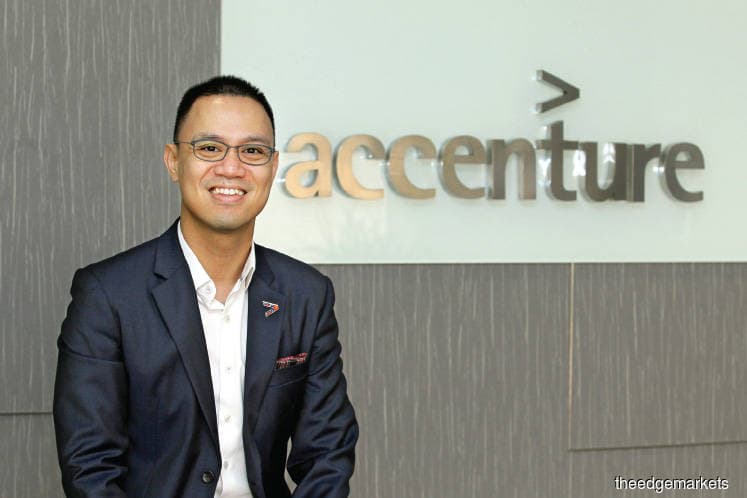
This article first appeared in The Edge Financial Daily on October 8, 2018
KUALA LUMPUR: In the highly cyclical oil and gas (O&G) industry, innovation is essential. In fact it is the key, experts say, to how the sector has survived throughout its decades-old history, including the 2015 industry downturn.
The trend now centres around one buzz phrase: digital adoption. It has accelerated new practices such as higher-precision reserves survey, remote maintenance and data-driven delivery schedules, among others.
Now, as another upcycle emerges, the companies have become increasingly aware of the importance of digital-related investments, one concern remains: lack of a digital-savvy workforce, said Accenture Malaysia resources lead managing director Cheah Wai Seng.
Surveys conducted by Accenture, Cheah told The Edge Financial Daily, found that the lack of a skilled workforce is among the fastest-growing concerns among O&G-linked companies in the Association of Southeast Asian Nations (Asean) between 2017 and 2018, when it comes to digital adoption.
Malaysia is not exempted. The problem, he said, is that mid-level executives are not picking up new skills while more experienced workforces, plenty of whom are contract workers, are “on the way out” of the sector.
“The engineers will not go away ... but we need to allow them to pick up new skills like programming and data science, leveraging on the institutionalised knowledge from the outgoing group,” he said.
“How do you institutionalise the knowledge and experience of these outgoing industry veterans? It behoves the government now in the education sector to drive new skills that are required by the workforce of the future,” he added.
Still, Malaysia is lucky to have entities such as Petroliam Nasional Bhd (Petronas), said Cheah, which is “aware of its responsibility” to drive innovations in the O&G industry as the biggest local player and manager of Malaysia’s O&G reserves.
“The third pillar of Petronas’ CORAL (Cost Reduction Alliance) initiative, known to many for its cost-cutting road map, is innovation. It does have a role to play in helping some of these players adopt new technologies ... the rising tide raises all boats,” he said, referring to the company’s CORAL initiative, which is a long-term industry-wide programme to inculcate a cost-conscious mindset across the country’s upstream sector.
Petronas also consistently publishes its “Technology Challenges” to seek the best solutions for issues and improvements for existing practices across the value chain via an open-for-all crowdsourcing approach.
“Oil majors will continue to be the key in driving such transformations, as seen in previous shifts in mindsets across the industry. Shell, for example, had a huge health, safety and environment (HSE) agenda and they drove the HSE standards that are being used across the industry today,” Cheah added.
Still, the O&G environment has not been looking good until recently. O&G firms in Malaysia — mostly small and medium enterprises (SMEs) — have yet to regain their footing, let alone look at the non-core digitalisation aspect of their businesses.
But complacency would mean losing out in catching the upcycle, said Cheah, while start-ups are crowding in, amid lower barriers of entry into the sector.
“The notion that new players find it hard to come into this capital-intensive or highly technical industry ... that is no longer the case. The route to oil is easier, faster and cheaper compared to just a few years ago,” he said, citing the overcrowded US shale market as an example.
He, however, conceded that in Malaysia’s case, certain segments, such as upstream offshore or petrochemical businesses, are more capital-intensive than before.
Yet, he noted that the costs of digital-related technologies such as cloud data storage and drones are getting lower by the day. “There will be newer technologies and start-ups that will go offshore and produce chemicals ... it is just a matter of time,” he predicted.
To avoid over-investing, Cheah suggested that SMEs focus on one pain point, and develop a used case by experimenting with digital in just that area.
“Start small so that you don’t end up doing everything,” he said, and pointed to Bangchak Corp Public Co Ltd, a medium-sized Thai O&G refiner and retailer which successfully expanded into renewables — partly thanks to digital adoption.
“Leverage on the ecosystem and show results quick, whether it is cost reduction or higher productivity — use that to scale up [and] reinvest in other digital initiatives; that is the approach I would take,” he said.
Across the O&G industry now, the costs for pilot projects have gone to as low as “tens of thousands of ringgit”, he noted.
Another common example that can be found across multiple industries is the use of cloud storage, which costs less to operate and expand compared to running one’s own servers.
“That’s a simple example ... but some companies have not done something as basic as that,” Cheah observed.
The government, he added, could also better develop a vibrant ecosystem to help local players drive innovation. This includes underlining which innovations it wants to push, and prioritise them by making people aware of its direction and providing the right funding mechanism, he added.
“In the government policies — when we look at how innovation is driven today, you don’t drive innovation alone. It is an ecosystem,” said Cheah.
“In the right kind of environment, companies can tap into the ecosystem to help drive new technologies.
“To that point, the government has a role to play in driving the right policies, putting in the right framework and infrastructure, and putting the right funding in the right way to drive new start-ups, which [existing] industry players can work with collaboratively,” he said.